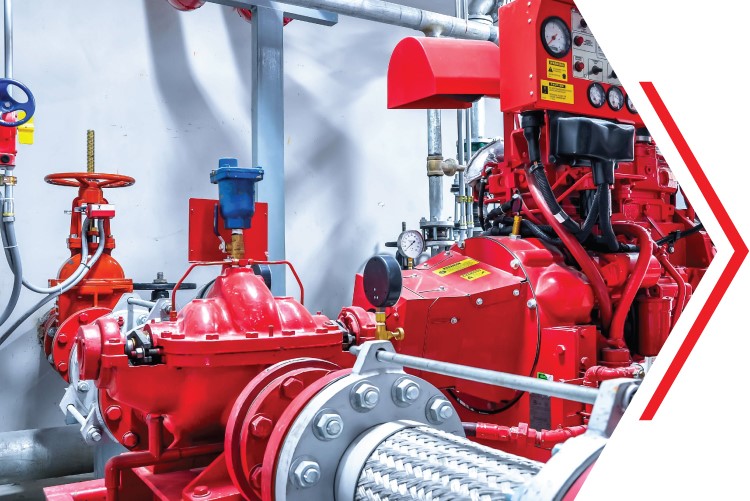
Complete Design of all Fire Systems
A fire suppression system serves three purposes: efficient fire detection, an appropriate response to the size and kind of fire, and the effective application of an agent to suppress and extinguish the fire.
Extinguished Fire has extensive experience in the design, installation, and maintenance of effective fire suppression systems that meet Australian Fire Protection Standards and safeguard your plant equipment, premises, and personnel. Our highly skilled design and engineering staff can provide a full variety of design and engineering services, from simple product guidance to thorough system design, including hydraulic analysis, design and engineering drawings, and risk assessment. For nearly every fire or explosive threat, we can supply solutions and specific application systems.
Furthermore, for projects requiring installation, project management, commissioning, and continuing maintenance, our skilled project management team offers a comprehensive solution.
Fire Sprinkler Systems
Extinguished Fire provides superior solutions to a wide range of industries and clientele. Fire safety and fire protection systems, which encompass all services, need specialised knowledge, which we are glad to say we deliver every day to our diverse clientele. The fact that the majority of them are repeat customers speaks volumes.
Materials and their behaviour depend on;
- System design and verification
- Full Hydraulic Calculations Detailed
- Design drawings
- Material Take-Off Sheets
- Fittings Bill of Materials
We can design Fire Sprinkler Systems based on our many years of expertise and the best equipment available for your specific project.

Fire Detection and Alarm Systems
With today’s advanced tools, we can readily identify the early signs of a fire. We can detect a quick temperature increase within a room or scan for infrared radiation from a distant flame. We can process the many types of detection and generate a critical warning to safeguard life, plant, and property.
Designing the right solution might be as simple as installing a light fixture. Understanding how to combine this thinking into a much bigger picture takes much more serious consideration and, at times, imaginative engineering.
Water & Foam Deluge Systems
Sprinklers are the most basic kind of fire prevention, however, some threats necessitate a different approach. Water Deluge Systems, for example, provide entire risk prevention:
- Road and Rail Tunnels
- LPG Vessels (Bullets / Spheres)
- Transformers & Turbine Protection
- Cooling Towers
The Deluge System design includes:
- Response time
- Designed correctly (functionality & operational)
- Future Maintenance
- Risk analysis
- Nozzle type and placement
- Detection and activation methodology
- Maintenance Planning

Emergency Warning And Intercommunication Systems
Early discovery of a fire is useless if employees are not quickly notified. The easiest strategy to escape a fire-risk location is to use several speakers or auditory alerts. The appropriate sound levels to notify building occupants are dictated by Australian and international regulations. These basic criteria are met via careful consideration of construction materials, furniture, and impediments.
During an emergency, a specialised communication system for fire and rescue crews is important for battling fires, evacuating persons, and providing early warning. All of these systems are integrated by Extinguished Fire to create a cost-effective solution.
Gas Suppression Systems
Extinguished Fire offers comprehensive design packages for all Gaseous Fire Detection and Suppression Systems. Our employees have received thorough training and have the technical competence to give the optimum solution to fulfil the risk criteria.
The sensing and actuation systems work together to ensure 24-hour availability and automatic release on demand. We provide comprehensive computer-based system calculations, including drawings of pipework, hangers, equipment schedules, and overall system schematics as part of our design package. Not to mention the required operators and maintenance documents.
This is how our skilled team of technicians, installers, and designers work:
- To establish the needs of the region, do a risk-based assessment with all project stakeholders, including engineers, council, site engineers, and equipment makers.
- Determine the equipment necessary for successful detection, suitable response, and application.
- Design in-house or with the help of an outside fire engineer.
- Compare the system’s performance against the design.
- Install the system and maintain it regularly.
